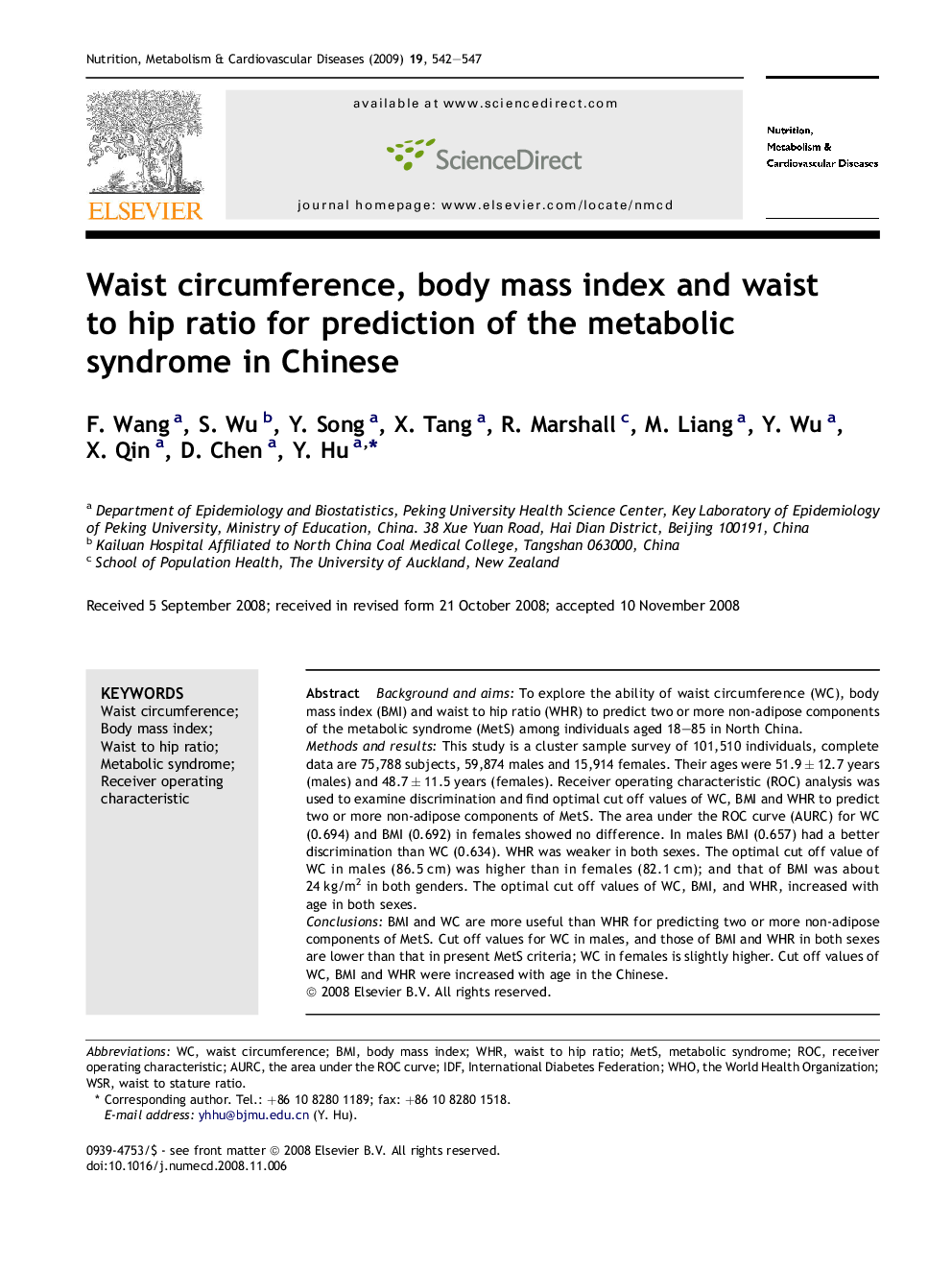| Article ID | Journal | Published Year | Pages | File Type |
|---|---|---|---|---|
| 3002889 | Nutrition, Metabolism and Cardiovascular Diseases | 2009 | 6 Pages |
Background and aimsTo explore the ability of waist circumference (WC), body mass index (BMI) and waist to hip ratio (WHR) to predict two or more non-adipose components of the metabolic syndrome (MetS) among individuals aged 18–85 in North China.Methods and resultsThis study is a cluster sample survey of 101,510 individuals, complete data are 75,788 subjects, 59,874 males and 15,914 females. Their ages were 51.9 ± 12.7 years (males) and 48.7 ± 11.5 years (females). Receiver operating characteristic (ROC) analysis was used to examine discrimination and find optimal cut off values of WC, BMI and WHR to predict two or more non-adipose components of MetS. The area under the ROC curve (AURC) for WC (0.694) and BMI (0.692) in females showed no difference. In males BMI (0.657) had a better discrimination than WC (0.634). WHR was weaker in both sexes. The optimal cut off value of WC in males (86.5 cm) was higher than in females (82.1 cm); and that of BMI was about 24 kg/m2 in both genders. The optimal cut off values of WC, BMI, and WHR, increased with age in both sexes.ConclusionsBMI and WC are more useful than WHR for predicting two or more non-adipose components of MetS. Cut off values for WC in males, and those of BMI and WHR in both sexes are lower than that in present MetS criteria; WC in females is slightly higher. Cut off values of WC, BMI and WHR were increased with age in the Chinese.
